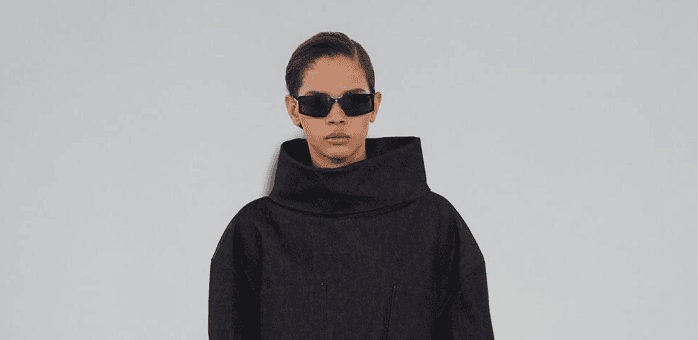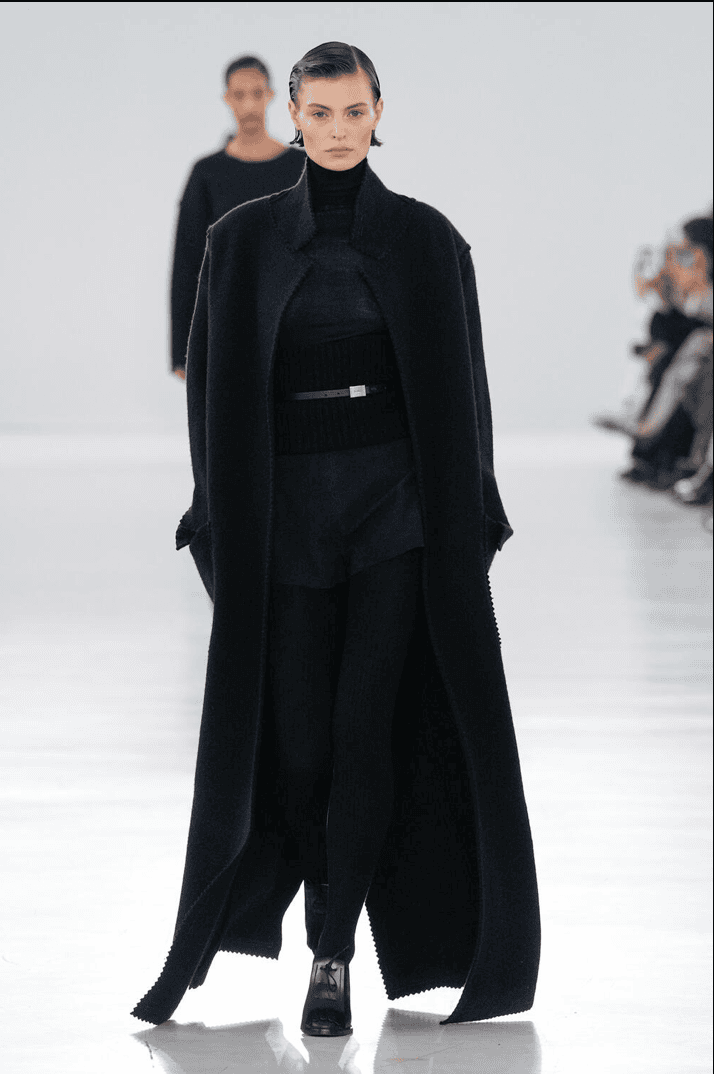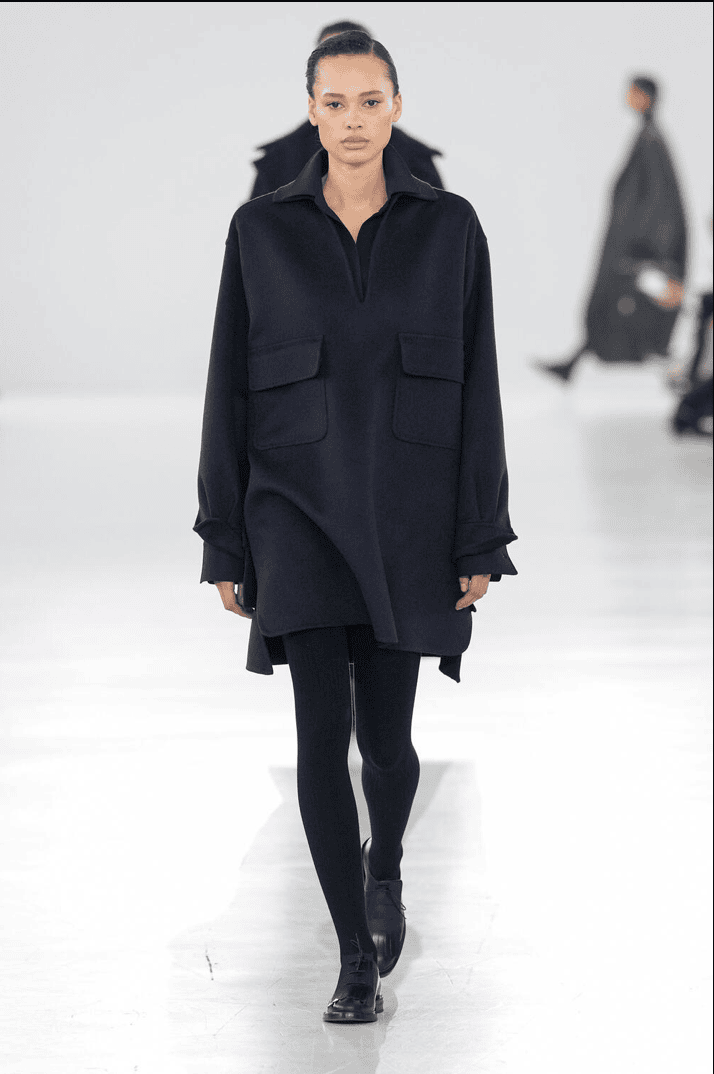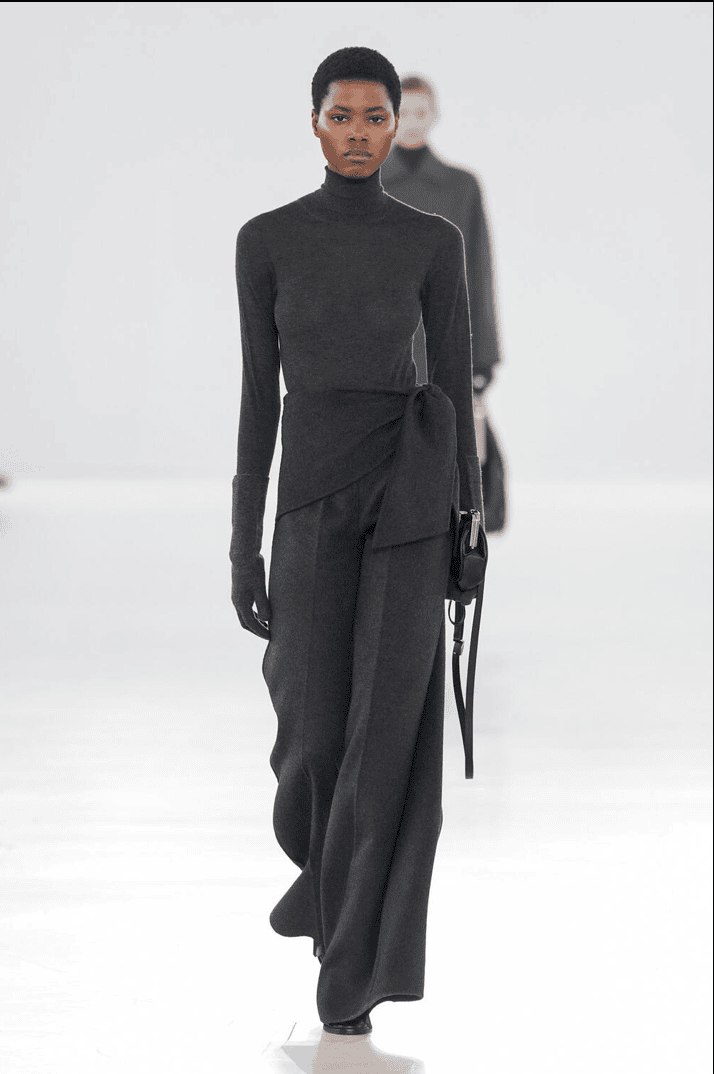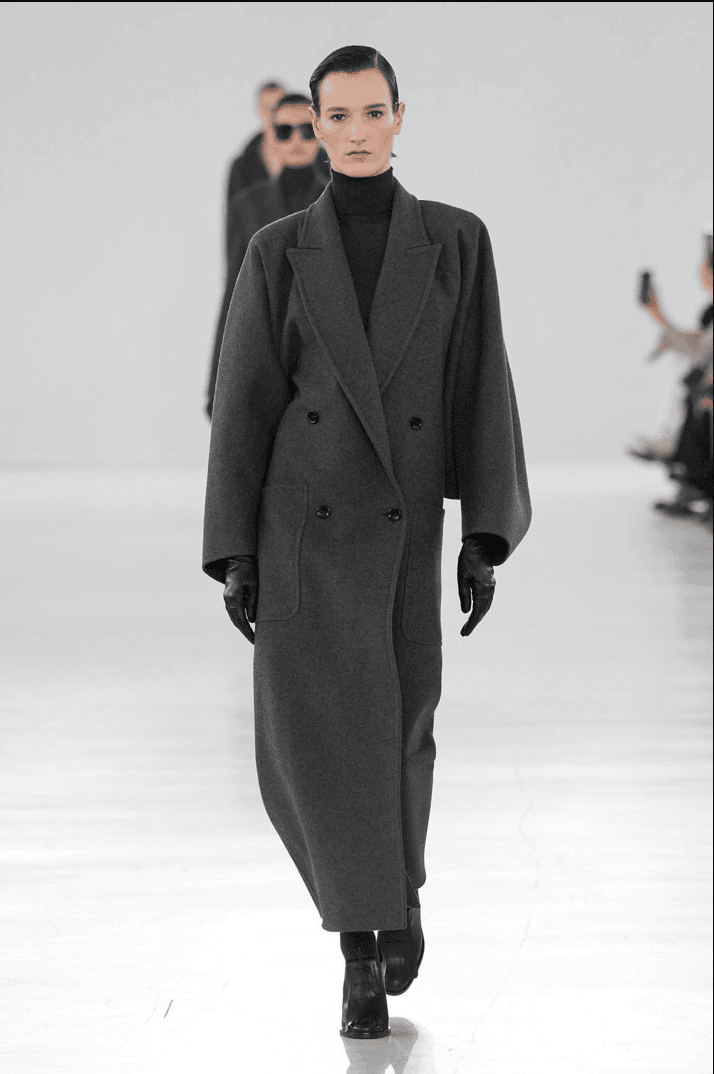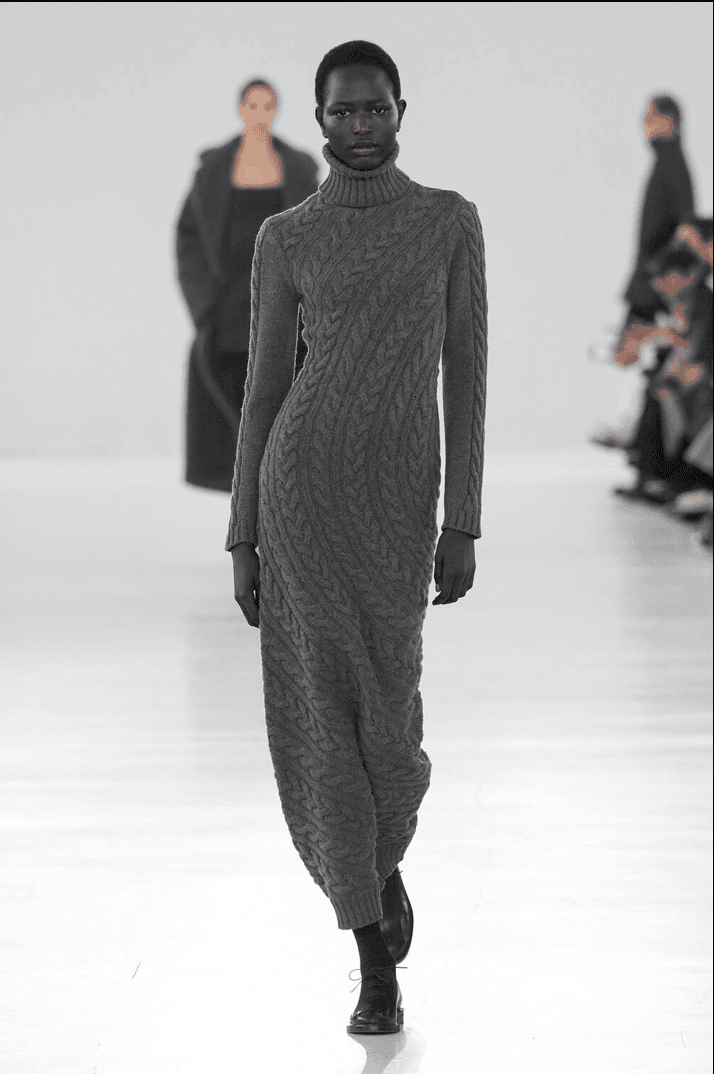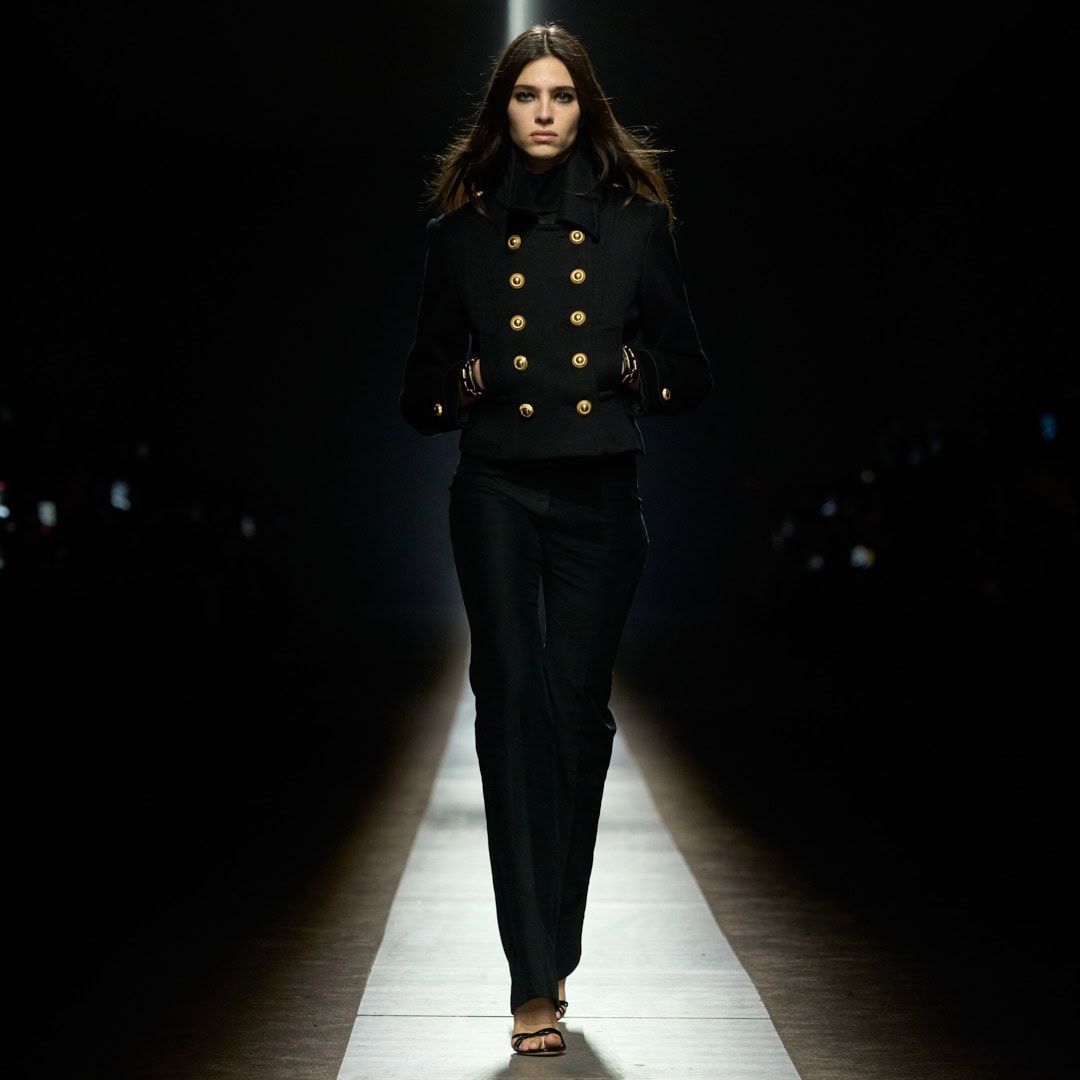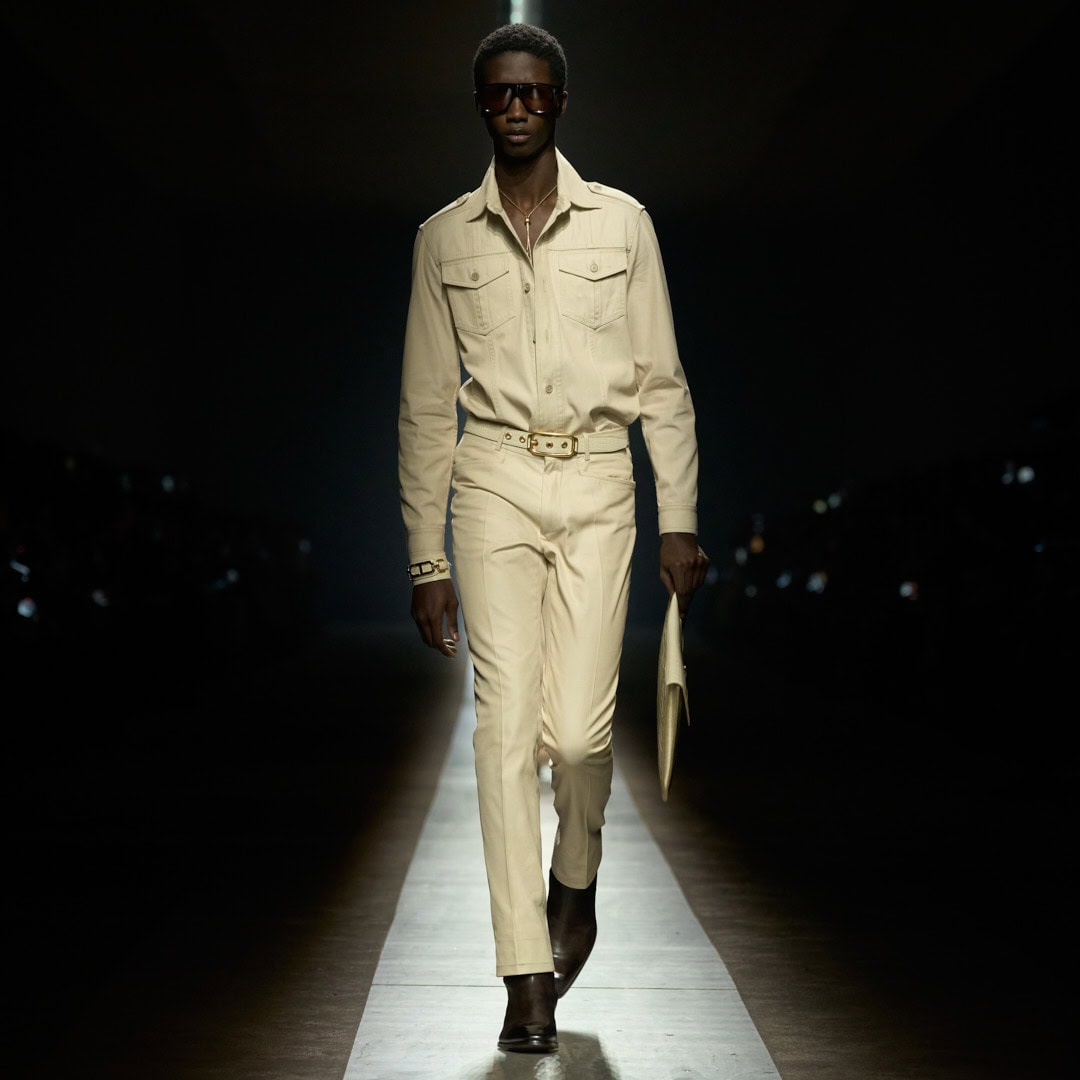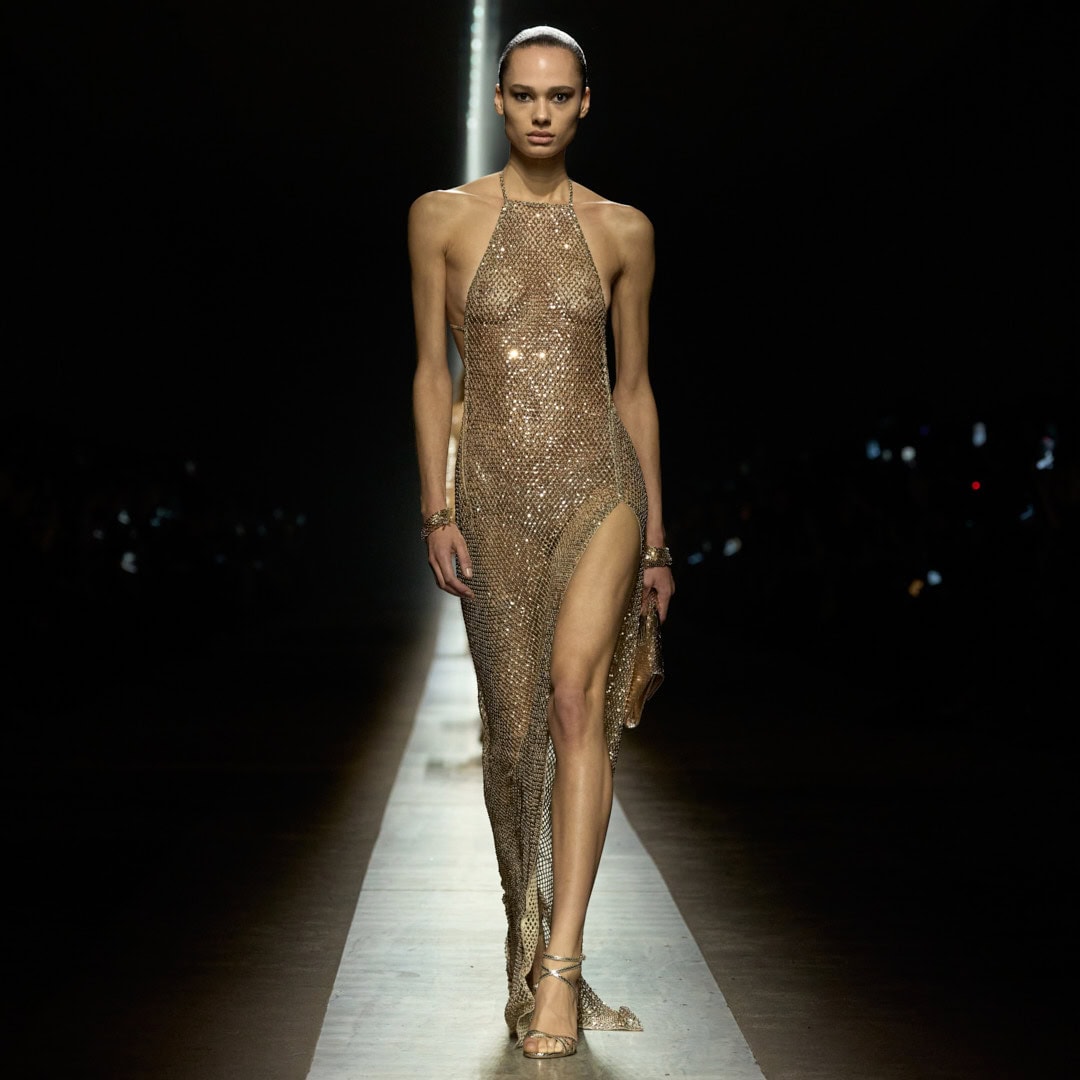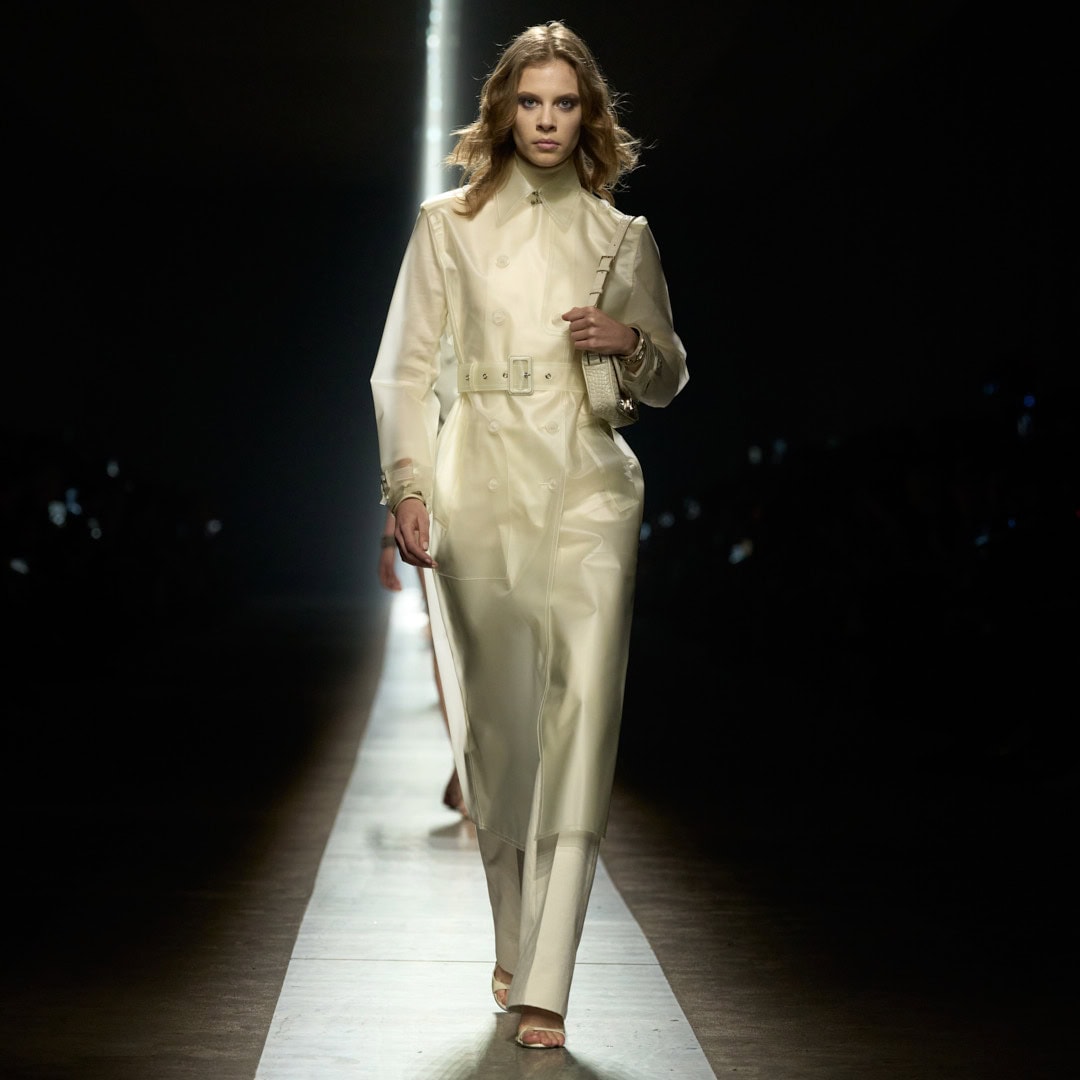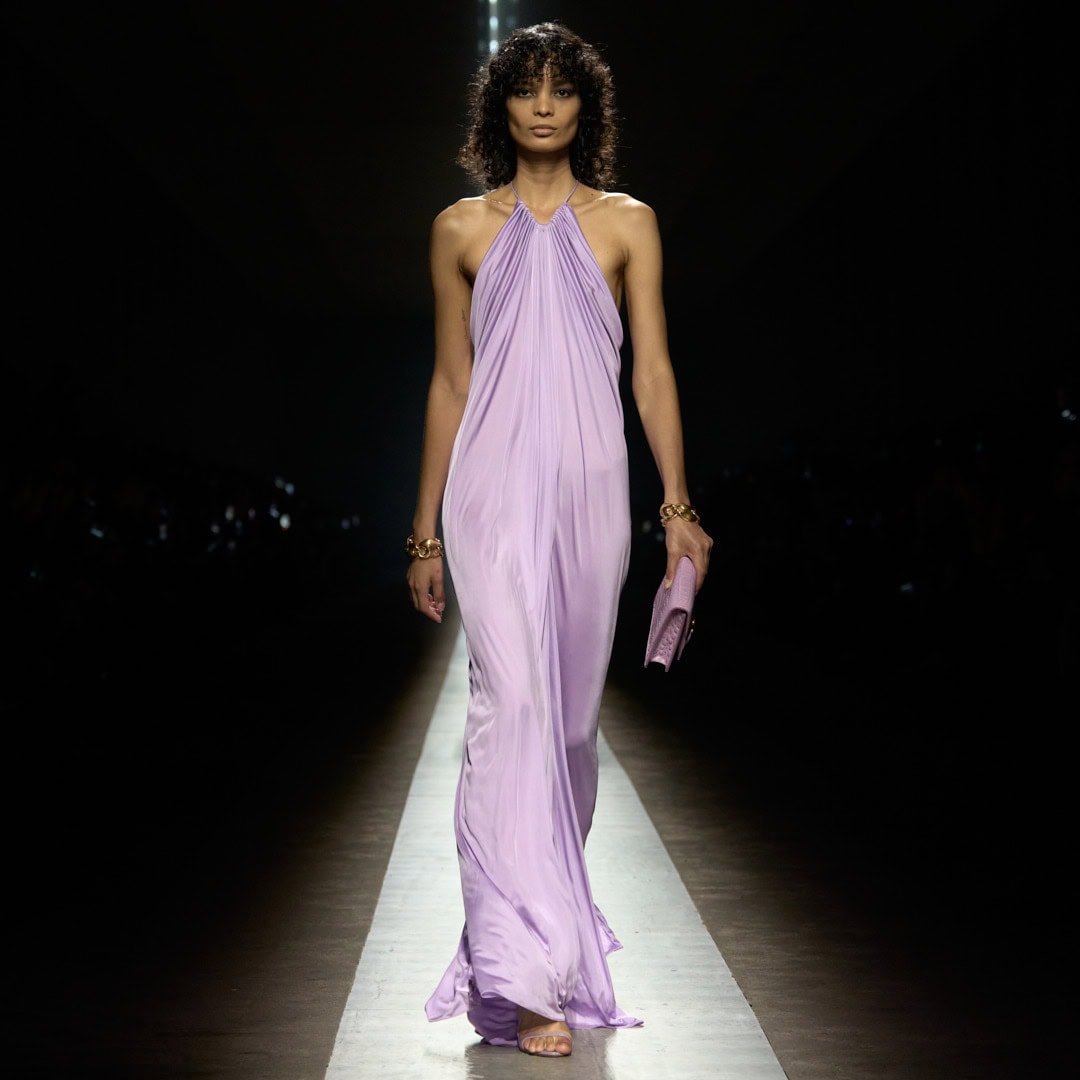Guests were everywhere but at their seats at Max Mara, exchanging air kisses and chit-chatting, when the music echoed through the venue and the first look was sent down the runway. Zig-zagging through standing guests, the model did her walk before retracing her steps backstage. Ultimately guests realised the colossal venue wasn’t booked only for selfies, and the show finally kicked off.
Max Mara is one of the purist fashion houses that exhausts all resources to defy minimalism. In a relentless quest to redefine it, designer Ian Griffiths jumps on quests for daring silhouettes and cuts informed by the most unexpected yet meticulously researched elements. For Fall/Winter 2024, the designer looked at the work, persona, and wardrobe of French author Colette. Centering on the Belle Époque spirit that enveloped the character, the collection intertwined elements of classicism, sensuality, and even Japanese influence to inform new constructions.
Ovoid collars infused a futuristic edge into the Max Mara coats and knitted maxi jumpers. The novelty occurred also on the sleeves, which referenced a kimono construction. Amidst the chic sophistication achieved by the ongoing collaboration between Griffiths and stylist Tonne Goodman, utilitarian elements surfaced in the collection through maxi pockets on overshirts and trench coats. The pragmatism of a wide-lapelled trench coat was met with the enigmatic feeling infused by a palette dominated by the inky navy, jet blacks, and smoky grays.
Griffith’s exploration of Japanese influences went beyond construction and extended to the styling of the collection. The elongated, flowing silhouette was defined by Obi-inspired knitted bands at the waist, complemented by slender belts that added a touch of modernism. Suiting exuded softness, marked by an absence of evident constraints. with few almost no signs of constrictions. Griffiths embraced the romper silhouette, manifesting in pin-stripe patterns presented in coordinated sets of rompers and jackets.
In a black box safeguarded from the rain built inside Milan’s Allianz Arena, flashes illuminated the darkness at the star-studded and celebrity-heavy Tom Ford show. A solitary light curtain cut through the dimmed room, delineating the contours of the runway. My partner, an outsider to the fashion scene, had joined the show. Just about the start, he said, “This feels like a club.” I nodded. And thus, a psychedelic cocktail of lights kicked off the spectacle.
From the confines of the lengthy runway emerged a series of military-inspired coats and jackets in navy, each varying in length and cut. Now in his second season leading Tom Ford, Peter Hawkings deviated slightly from the founder’s silhouette to establish his own take at the brand. But Ford’s legacy isn’t entirely lost. Iconic Ford-isms ran through the collection, featuring three-piece suites, cinched waistcoats, and the highest needle heels.
Hawkings stays most faithful to the brand’s codes by making disco-ready clothes. Beyonce’s Renaissance served as the backdrop, its disco/dance rhythms in harmony with fringed, sparkly dresses adorned with fur coats, complete with a clutch bag and sunglasses –– an ensemble perfectly suited for the Studio 54 that the collection evoked.
